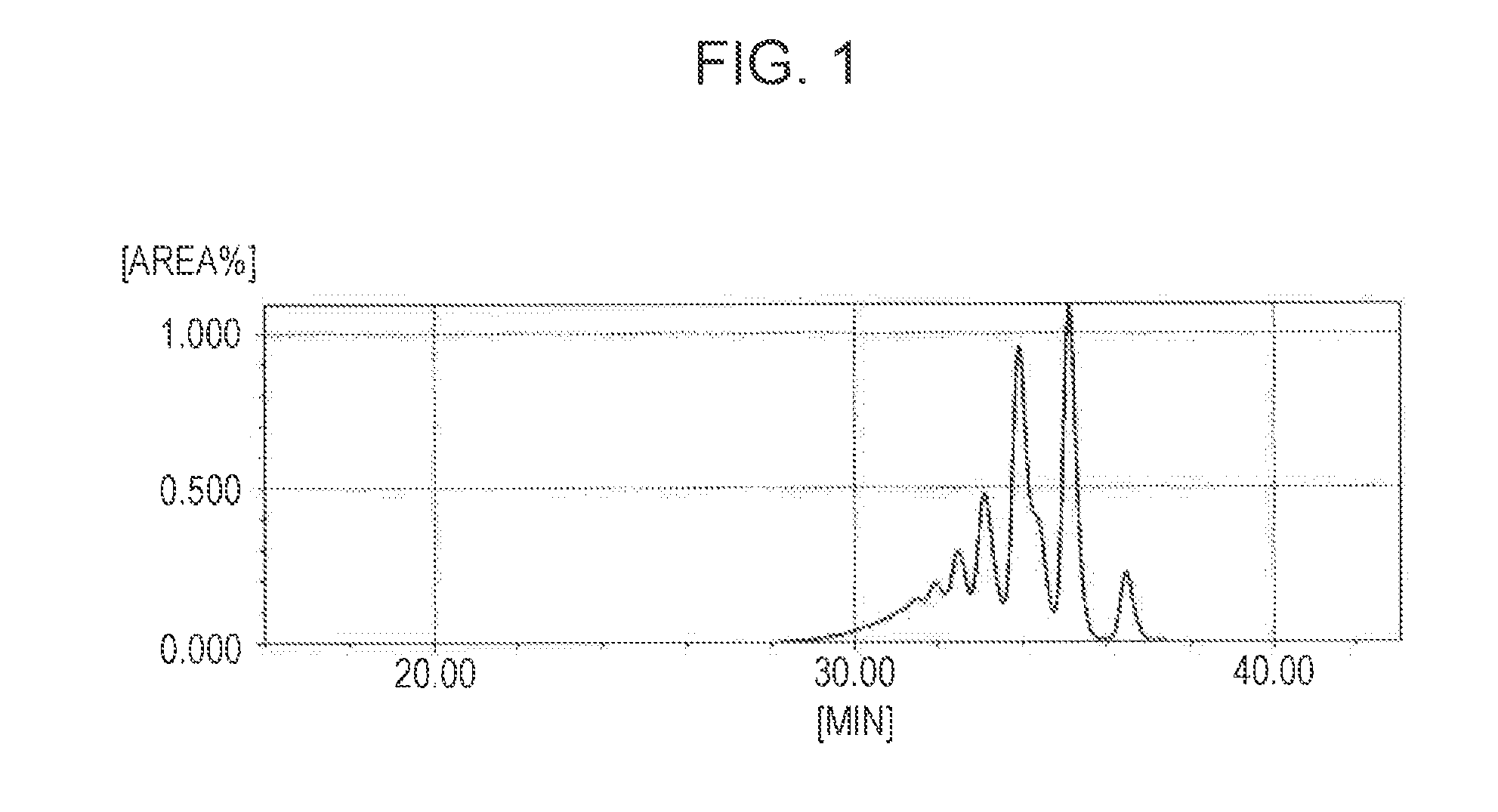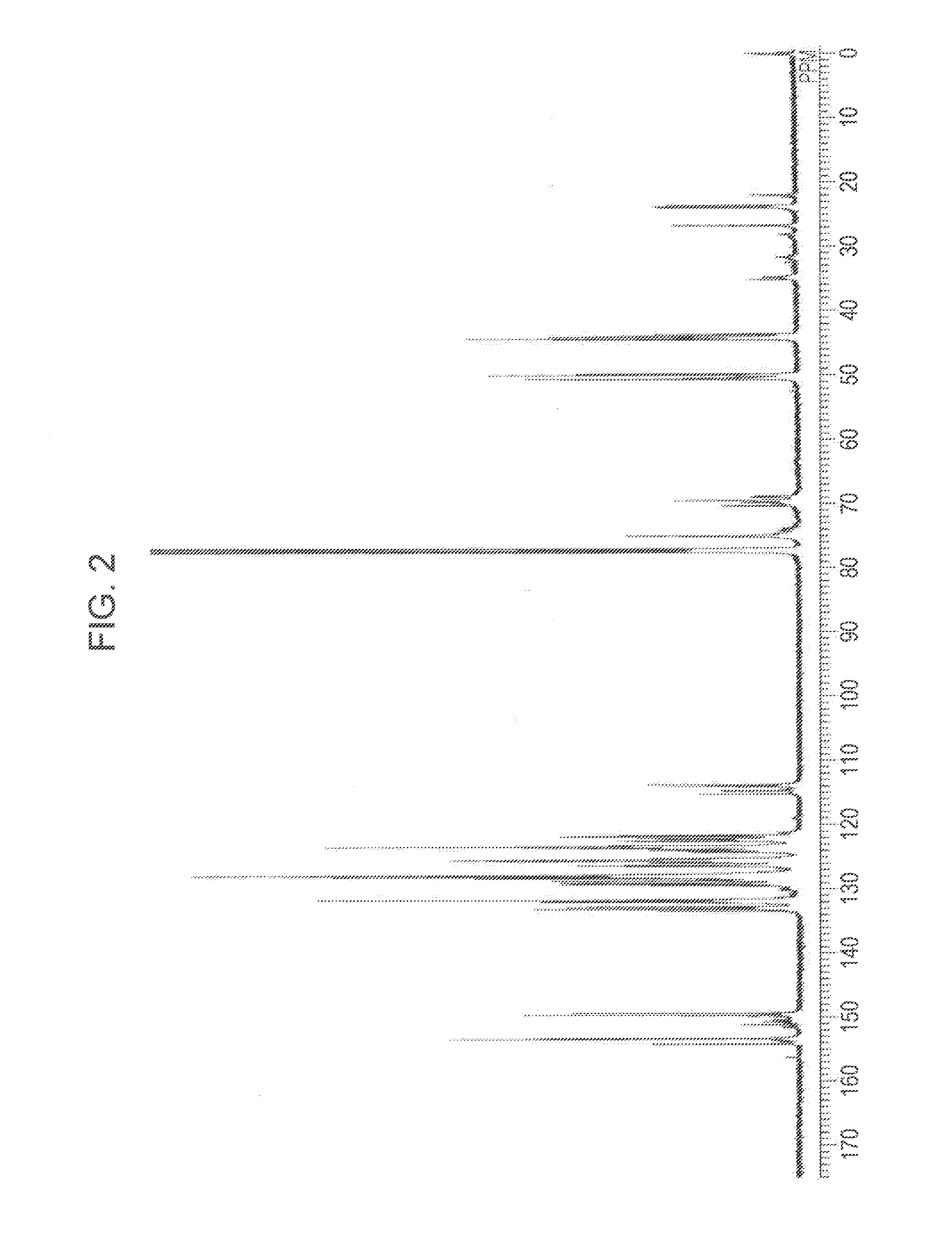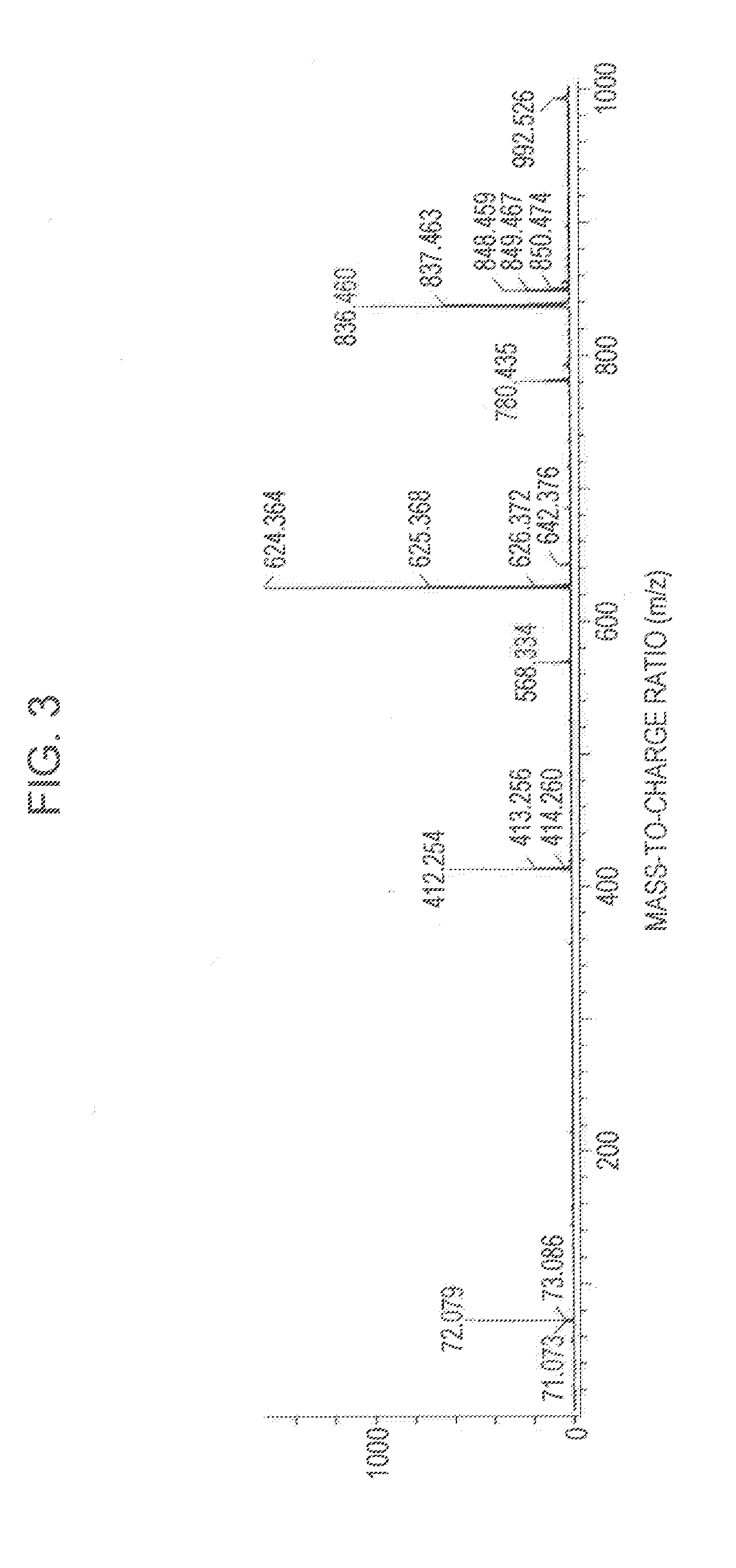Epoxy resin, curable resin composition and cured product thereof, and printed wiring board
- Summary
- Abstract
- Description
- Claims
- Application Information
AI Technical Summary
Benefits of technology
Problems solved by technology
Method used
Image
Examples
example 1
[0180]A flask equipped with a thermometer, a dropping funnel, a condenser, a fractional distillation column, and a stirrer was charged with 144 parts of β-naphthol (1.0 mol), 150 parts of isopropyl alcohol, 130 parts of 37% formalin aqueous solution (1.6 mol), and 41 parts of 49% sodium hydroxide (0.5 mol). This mixture was heated from room temperature to 80° C. under stirring and stirred at 80° C. for an hour. Subsequently, 144 parts of α-naphthol (1.0 mol) was added and the mixture was further stirred at 80° C. for an hour. After the reaction was completed, the reaction solution was neutralized by addition of 60 parts by mass of sodium phosphate. The reaction solution was then mixed with 600 parts of methyl isobutyl ketone, washed three times with 150 parts by mass of water, and then dried under reduced-pressure heating to provide 290 parts by mass of a naphthol resin (B-1). The obtained naphthol resin (B-1) had a hydroxyl equivalent weight of 153 g / eq.
[0181]Subsequently, a flask ...
example 2
[0182]An epoxy resin (A-2) (200 parts by mass) was obtained as in Example 1 except that the amounts were changed to 72 parts of β-naphthol (0.5 mol), 130 parts of isopropyl alcohol, 142 parts of 37% formalin aqueous solution (1.75 mol), and 24 parts of 49% sodium hydroxide (0.3 mol). The obtained epoxy resin (A-2) had an epoxy equivalent weight of 242 g / eq and a softening point of 134° C. The GPC chart is shown in FIG. 4. From the GPC chart, the trimer (x1) had a content of 15.8%, the dimer (x2) had a content of 3.0%, the calixarene compound (x3) had a content of 33.0%, and the high-molecular-weight component (x4) had a content of 48.2%.
example 3
[0183]A flask equipped with a thermometer, a dropping funnel, a condenser, a fractional distillation column, and a stirrer was charged with 115 parts of β-naphthol (0.80 mol), 173 parts of α-naphthol (1.20 mol), 54 parts by mass of a cresol-novolac resin having a softening point of 75° C. (B&R method) (the number of moles of the cresol skeleton: 0.45 mol), 150 parts of isopropyl alcohol, 135 parts of 37% formalin aqueous solution (1.66 mol), and 5 parts of 49% sodium hydroxide (0.06 mol). This mixture was heated from room temperature to 80° C. under stirring and stirred at 80° C. for two hours. After the reaction was completed, the reaction solution was neutralized by addition of 10 parts by mass of sodium phosphate. The reaction solution was then mixed with 727 parts of methyl isobutyl ketone, washed three times with 182 parts by mass of water, and then dried under reduced-pressure heating to provide 350 parts by mass of a naphthol resin (B-2). The obtained naphthol resin (B-2) had...
PUM
| Property | Measurement | Unit |
|---|---|---|
| Softening point | aaaaa | aaaaa |
| Softening point | aaaaa | aaaaa |
| Mass per equivalent | aaaaa | aaaaa |
Abstract
Description
Claims
Application Information
 Login to view more
Login to view more - R&D Engineer
- R&D Manager
- IP Professional
- Industry Leading Data Capabilities
- Powerful AI technology
- Patent DNA Extraction
Browse by: Latest US Patents, China's latest patents, Technical Efficacy Thesaurus, Application Domain, Technology Topic.
© 2024 PatSnap. All rights reserved.Legal|Privacy policy|Modern Slavery Act Transparency Statement|Sitemap



